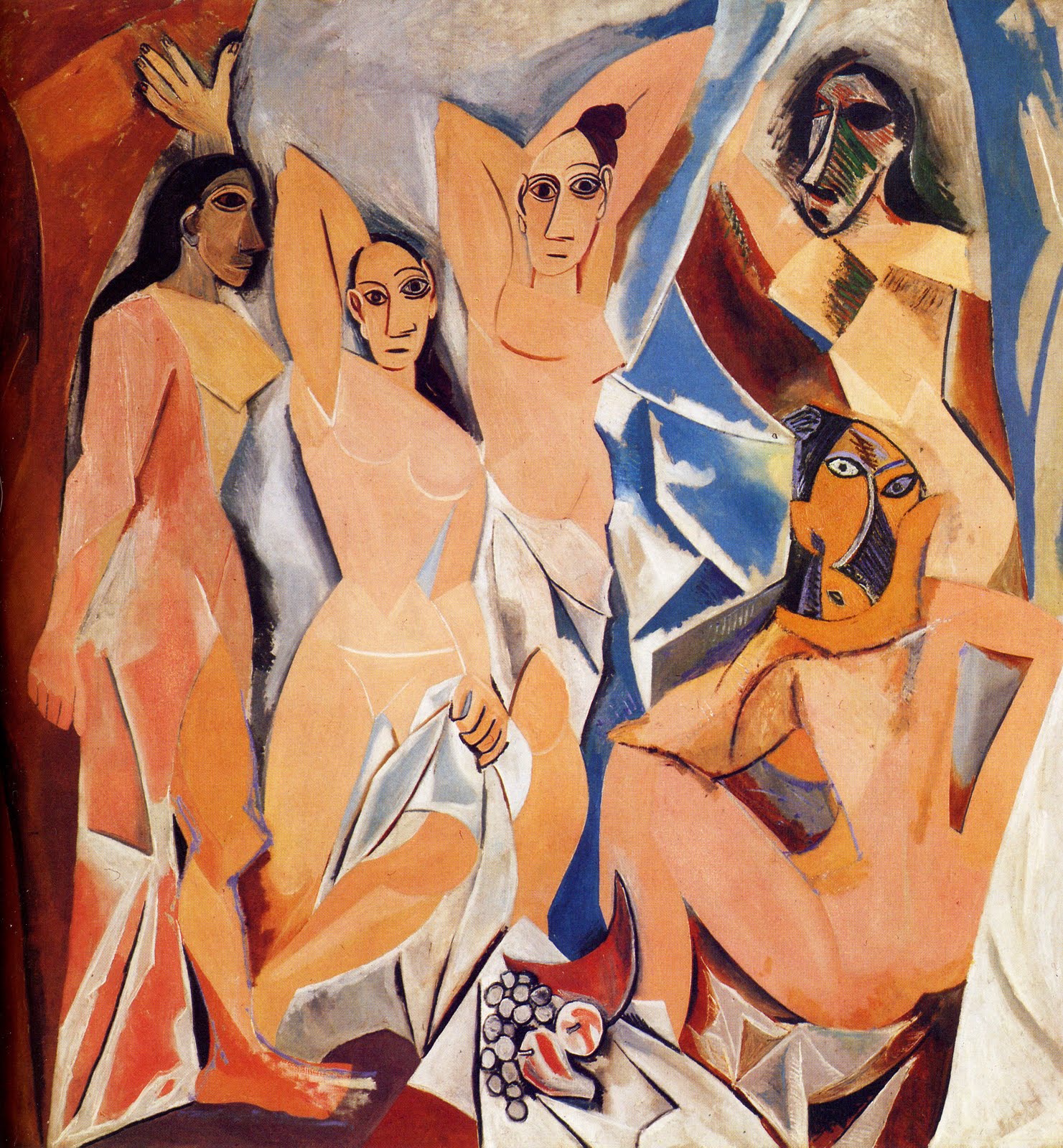According to Sayre what are the three steps in the process of "seeing"?
reception, extraction, inference
Objects that are intended to stimulate a sense of beauty in the viewer are thought to be _______ rather than functional.
aesthetic
We can clearly see the artistic impulse to "give form to the immaterial," to represent hidden or universal truths, spiritual forces, and personal feelings in:
religious art
Which of these is not a principle of "green architecture"?
architects look to continue to use building techniques and materials that have been in use since the Industrial Revolution in the West

Where did Picasso draw inspiration for the faces of the female figures on the right side of the composition of "Les Demoiselles d'Avignon"?
African ritual masks

Jan van Eyck's "Giovanni Arnolfini and His Wife Giovanna Cenami" depicts many objects that have symbolic meaning. The use or study of these symbols is called:
iconography.

In "The Treason of Images," the artist combines awareness, creativity, and communication by encouraging the viewer to look closely at an object. The artist is:
René Magritte.

When a work of art such as Kasimir Malevich's "Suprematist Painting, Black Rectangle, Blue Triangle (p. 29) shows no reference to the natural world of images, it is usually called:
nonrepresentational.
Which of these statements best defines visual literacy?
the ability to recognize, understand, and communicate the meaning of visual images

Rene Magritte's "The Treason of Images" asks us to consider_______.
that images and words refer to things that we see, but are not the things themselves
The symbolic hand gestures that refer to specific states of mind or events in the life of Buddha are called
mudra.
The terms naturalistic or realistic art are sometimes used to describe
representational art.
In a work of art, "content" refers to
what the work expresses or means.
What is the chief form of Islamic art?
calligraphy
According to the National Endowment for the Arts what activist role should artists take?
They should educate the public about the value of art.
The artist's relation to the public often depends upon how it views
what the artist is trying to say.
Historically, why do many people receive new and innovative work with reservation?
They have little context in which to view the work.
What specific component of the National Endowment for the Arts made works of art available to the general public?
the Arts in Public Places program
Which sculptor eventually saw his controversial work destroyed?
Richard Serra
In Chapter 3, Sayre discusses two ways of valuing art. What are they?
monetary and intrinsic
What is the relationship between form and content?
They're opposed to each other; form is the literal shape and mass whereas content is the meaning of an image.
Define subject matter.
The literal, visible image in a work of art, as distinguished from its content, which includes the connotative, symbolic, and suggestive aspects of the image.
The first exhibition that introduced most Americans to "modern" art was what?
1913 Armory Show in New York.
Identify the four roles that artists play that have not changed over time.
1) Artists help us see the world in new/innovative ways.
2) Artists make a visual record of the people, places, and events of their time and place.
3) Artists make functional objects and structures (buildings) more pleasurable and elevate them or imbue them with meaning.
4) Artists give form of the immaterial——hidden or universal truths, spiritual forces, personal feelings.